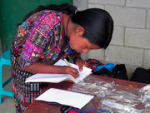Community Embraces New Word Game at Mid-Year Play Day This past Sunday, families at Takoma Park’s Seventh Annual Mid-Year Play Day had the opportunity to experience OtherWordly for the first time. Our educational language game drew curious children and parents to our table throughout the afternoon. Words in Space Several children gathered around our iPads […]
Read more Tina Rosenberg wrote in a blog post for the NYTimes last week, about microconsignment, which is..
Tina Rosenberg wrote in a blog post for the NYTimes last week, about microconsignment, which is..
A way for village entrepreneurs to sell innovative and important products for which there is no established market — such as solar lamps, water purifiers, stoves and reading glasses — without having to take on debt.
Which is in contrast to microlending, which is…
…the lending of very small amounts of money to very poor people to help them invest in things that have the potential to bring income later on… It reaches nearly 100 million clients in more than 100 countries.
In today’s NYT blog post, she further describes the social aspects of microconsignment,
The hard part about putting microconsignment to work on a larger scale is that it is more complex and labor-intensive than microcredit… It is relatively easy to do microlending on a large scale, which is its genius. Banks have every incentive to scale up quickly.
Microconsignment reverses this. It puts all the burdens on the organization supplying the goods. “With microconsignment, people don’t have to have a huge innovative risk-taking spirit,” said Martín Burt, the founder and chief executive of the Fundación Paraguaya, a 25-year-old organization that fights poverty in Paraguay through entrepreneurship and has worked extensively with microcredit.
While microlending banks (and other banks) may have financial incentives in the short run to push loans onto people who cannot afford them, there is no such financial incentive for microconsignment organizations. … [though] in some ways microconsignment is easier to scale up financially than microcredit
And how to train locals how to build their fledgling businesses takes time, something well accomplished with cheap labor from college students:
Students from colleges all over the United States — about 250 so far — can spend a school break or summer working in Guatemala, Ecuador, Nicaragua or South Africa in the local microconsignment businesses. As in any other study abroad program, the students or the university pays for the privilege, and they can get academic credit. The students improve their Spanish, learn about a different culture, try development work and develop business experience.

